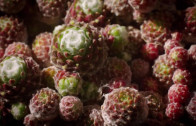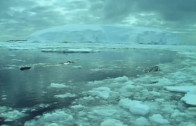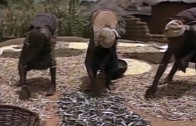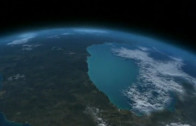Kingdom of Plants
Kingdom of Plants reveals a whole new dimension in the lives of plants, from the most bizarre to the most beautiful. Using time-lapse and pioneering techniques in macro photography, naturalist David Attenborough traces plants from their beginnings on land to their vital place in nature today. We also move from our time scale to theirs, revealing the true nature of plants as creatures that are every bit as dynamic as animals. Attenborough discovers a microscopic world that’s invisible to the naked eye, where insects feed and breed, where flowers fluoresce and where plants communicate with each other and with animals using scent and sound.
Series
Part one begins inside the magnificent Palm House—a unique rainforest in London. We see extraordinary plants that are so well adapted to wet and humid environments and also the intimate relationships between wet zone plants and the animals that depend on them. Watching a kaleidoscope of breath-taking time-lapses of flowers swelling and blooming in 3D, we are able to piece together the very first evolutionary steps that plants took to employ a wealth of insects to carry their precious pollen for the first time. David discovers clues to answer a question that even had Charles Darwin stumped: How did flowering plants evolve so fast to go on to colonise the entire planet so successfully? Also marvelled at are orchids—the largest family of flowering plants. Many of these captivating flowers evolved to be pollinated by a single insect species and in doing so developed such complicated contraptions of pollination it’s hard to imagine anything more beautiful. One orchid even looks like a bee.
Part two invokes the use of specialist equipment to explore a world beyond the confines of human senses. We begin with the secret world of plant movement, illustrated by sinister carnivorous plants that show just how active plants can be. Bladderwort utricularia is a pond-dweller that is among the fastest known, its traps snapping shut in less than a millisecond. And as the seasons change, Attenborough demonstrates how plants operate on a different time scale to us; how they modify their lives according to the time of year. We discover insects’ hidden links with plants, both as pests and pollinators. UV-sensitive cameras reveal the invisible character of plants and their flowers’ mesmerising patterns; a parallel-dimension of strange colours and stunning patterns through which plants communicate with them. With the aid of visual effects, Attenborough steps among the swirling vortices of plant scent; communication signals with which plants are inextricably plugged in to the natural world.
Attenborough discovers the plants that have evolved to shed their dependency on water enabling them to survive in the driest environments. The story begins at midnight in midsummer at the Princess of Wales Conservatory to witness the extraordinary nocturnal blooming of a cactus. The queen of the night, with its giant flowers, is the centre piece of a stunning symphony of cacti blooms that burst open in the desert at night. In slow motion, we discover the extraordinary connections between cacti and their natural pollinators—bats. As the sun rises, we meet other amazing plants. Species like the century plant, the Agave franzosini, which grows steadily for over 50 years, only to then flower itself to death with one mighty telegraph pole sized bloom which literally bursts out of the roof of a greenhouse. We also see a project to store seeds from the vast majority of remaining species of plant on the planet, in an attempt to save plants from extinction by dominant culture.




